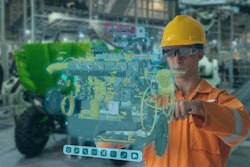
With robotics and automation taking over more tasks in organizations, the role of the chief robotics officer (CRO) should be created to strategically drive the proliferation of these technologies, according to Gartner, Inc.
“Nearly every business is going to have a robot doing something for them within the next decade,” says Dwight Klappich, VP analyst with the Gartner Supply Chain practice. “In fact, we interviewed 517 supply chain professionals from November to December of 2020 and found that 96% of respondents had used, or plan to use, cyber-physical automation in warehousing and manufacturing operations.”
From Gartner Inc.:
- The vast majority of companies have yet to figure out who owns and should manage their growing fleets of robots.
- The CRO role ideally combines skills from the engineering, IT and business realms. Finding someone who can balance these often-conflicting cultures will be game changing.
- CROs must have a deep knowledge of how automation works and what the relevant use cases are. They also have to collaborate with IT and develop a strategy for implementing new robot or automation initiatives within the existing IT environment. Lastly, they need to align their strategy to the overall business strategy and be a partner to their executive colleagues.
“The CRO role in supply chain will evolve similar to the CIO role in IT and start gaining in importance over the decade. If an organization is already automation-heavy, or wants to be, it’s best to start out with establishing a robotics center of excellence and work their way from there,” Klappich says.


















![Top Tech Startup Logo 2025 Vertical [color] (1)](https://img.foodlogistics.com/mindful/acbm/workspaces/default/uploads/2025/07/top-tech-startup-logo-2025-vertical-color-1.pZkBK95TLe.png?ar=16%3A9&auto=format%2Ccompress&bg=fff&fill-color=fff&fit=fill&h=135&q=70&w=240)

